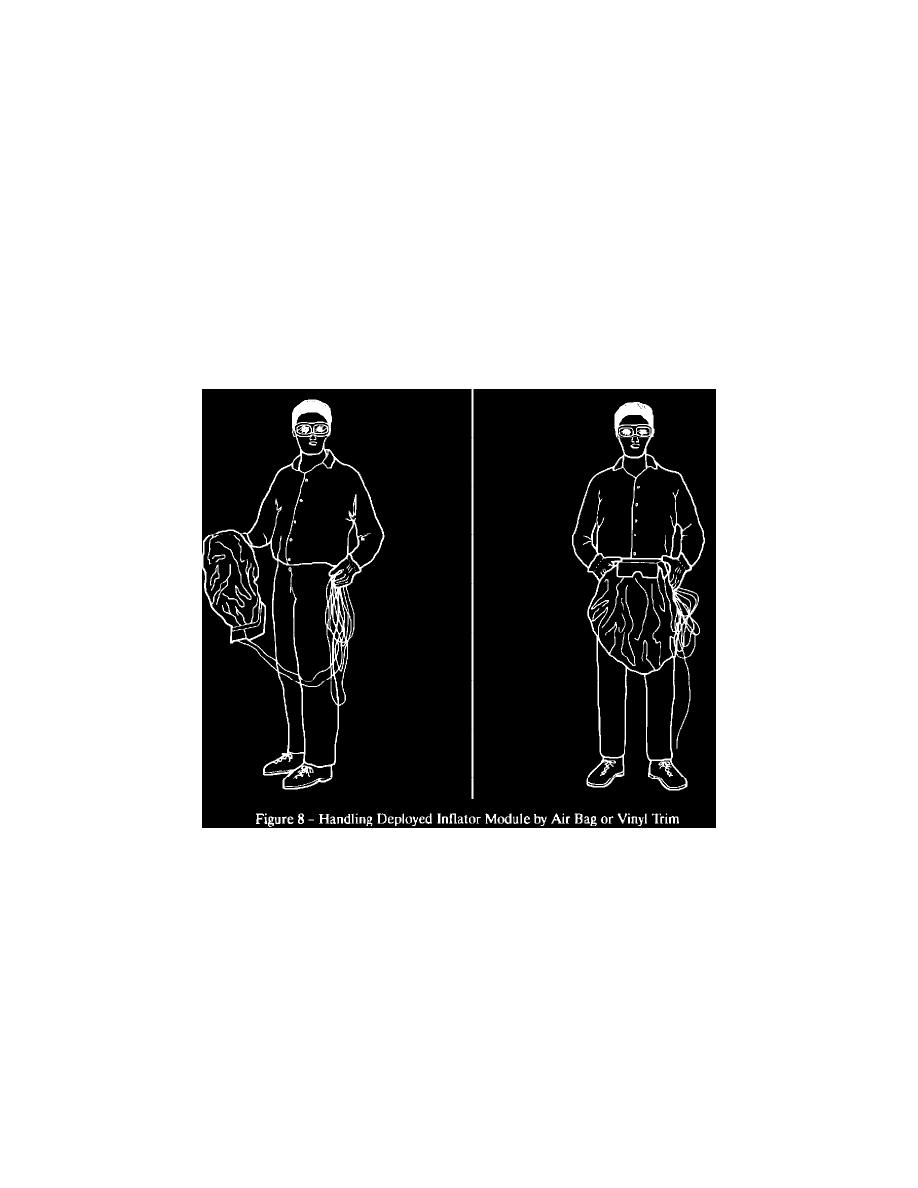Seville V8-300 4.9L (1991)

Figure 7 - Connecting to a Power Source
18.
Connect the universal deployment harness wires to the power source to immediately deploy the inflator module. Refer to Figure 7.
19.
Disconnect the universal deployment harness from the power source.
20.
Short the two universal deployment harness leads together by fully seating one banana plug into the other.
21.
In the unlikely event that the inflator module did not deploy after following these procedures, proceed immediately with steps 26 through 30
below. If the inflator module did deploy, proceed with steps 22 through 25 below.
After the inflator module has been deployed, the surface of the air bag may contain a powdery residue. This powder consists primarily of corn starch
(used to lubricate the bag as it inflates) and by-products of the chemical reaction. Sodium hydroxide dust (similar to lye soap) is produced as a
by-product of the deployment reaction. The sodium hydroxide then quickly reacts with the atmospheric moisture and is converted to sodium carbonate
and sodium bicarbonate (baking soda). Therefore, it is unlikely that sodium hydroxide will be present after deployment. As a precaution, however,
gloves and safety glasses are recommended to prevent any possible irritation of the skin or eyes.
CAUTION:
Safety precautions must be observed when handling a deployed inflator module. After deployment, the metal surfaces of the inflator
module will be very hot. Allow the inflator module to cool before handling any metal portion of it. Do not place the hot deployed
inflator module near any flammable objects. Failure to follow procedures may result in fire or personal injury.
Figure 8
After an inflator module has been deployed, the metal canister and surrounding areas of the inflator module will be very hot. Do not touch the metal
areas of the inflator module for about 10 minutes after deployment. If the deployed inflator module must be moved before it is cool, wear gloves and
handle by ihe air bag or vinyl trim. Refer to Figure 8.
22.
Put on a pair of shop gloves to protect your hands from possible irritation and heat when handling the deployed inflator module.
23.
Disconnect the pigtail adapter from the inflator module as soon after deployment as possible to avoid the possibility of damage to the pigtail
adapter or universal deployment harness due to possible contact with the hot inflator module canister. The pigtail adapter and universal
deployment harness are designed to be reused. They should, however, be inspected for damage after each deployment and replaced if necessary.
24.
Dispose of the deployed inflator module through normal refuse channels after it has cooled for at least 10 minutes. See Section 9J, "Supplemental
Inflatable Restraint System Introduction", in the Service Information Manual.
25.
Wash your hands with mild soap and water afterward.
NOTICE:
The remaining steps are to be followed in the unlikely event that the inflator module did not deploy after following these procedures.
